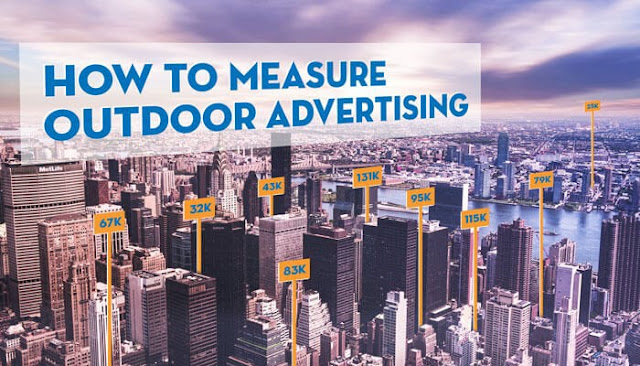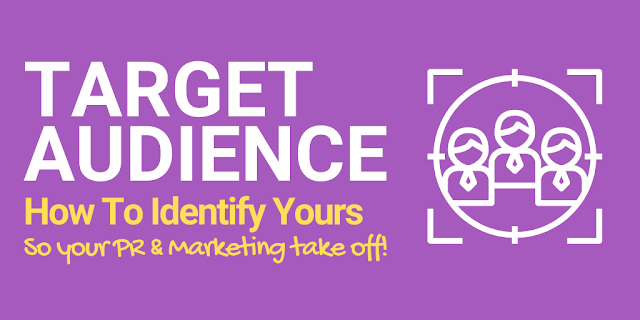Maximizing ROI with Outdoor Advertising: Tips for Effective Campaign Planning
Outdoor advertising is a popular way to get your message out there. But if you invest time and money in an outdoor advertising campaign, you must maximize its ROI. Here are some tips for maximizing the success of your next outdoor advertising campaign:
The Basics of Outdoor Advertising ROI: How to Measure Success
ROI is a measurement of the return on investment (ROI). It measures how much money you make from the money you spend. In other words, it's the ratio between your profits and expenses. The higher this number is, the better off you are in terms of ROI.
You can measure ROI in two ways: cost per impression or click (CPC). CPC measures how much advertisers pay each time a user clicks on their ad; CPM measures how much advertisers pay for every thousand impressions of their ad displayed on digital screens or billboards around town. The difference between these two metrics depends on whether or not someone clicks on their advertisement before leaving it behind forever!
Understanding Your Target Audience: Key to Effective Campaign Planning
Understanding your target audience is key to effective campaign planning. Knowing your target audience can help create a more effective campaign and improve ROI.
The first step in understanding what type of people will be interested in seeing your advertisements is determining their demographics or the characteristics that define them as individuals. For example, if you're looking for a new audience member at an outdoor advertising venue, deciding whether they are male or female may help narrow down where they might be spending time during the day (e.g., commuting home from work versus going out on errands). It also gives advertisers insight into how much money they make each year and what other factors (like age) might affect their purchasing decisions when deciding between brands competing for their attention through outdoor advertising venues such as billboards or bus shelters.
Choosing the Right Outdoor Advertising Medium for Your Campaign
When choosing an outdoor advertising medium, it's important to consider your target audience and how they're likely to interact with the medium. For example, there may be better options than billboards if you are trying to reach young people who are always on the go. However, bus shelters or benches could be ideal because they allow people to sit down and take in information from a distance without feeling like they are being bombarded by ads all day long.
If you plan on using multiple types of outdoor media in your campaign, make sure each one complements the others in terms of message delivery and tone. For example: if one billboard promotes an upcoming concert at venue X while another promotes drink specials at bar Y located across town from venue X, and both messages are geared toward 18-25-year-olds--there may not be enough cohesion between them for this strategy to work effectively!
Keep your message short and simple.
Keep your message short and simple.
Please don't make it too long, don't make it too complicated, don't make it boring or hard to understand, and don't use words that are difficult to pronounce.
Make sure the message is easily readable.
If you want customers' attention for more than just a few seconds, use bolding and italics so people know what's important in each part of your ad. Adding color into the mix as well (such as red text), even without highlighting anything specific within an advertisement itself), will help attract attention from passersby who may otherwise not pay much attention at all!
Crafting Compelling Ad Copy: Tips and Best Practices
- Use short sentences and simple words
- Use a conversational tone
- Make sure the message is clear to your audience 4. Include a headline that grabs attention 5. Provide a call to action
Designing Eye-Catching Outdoor Ads: Dos and Don'ts
- Use a limited number of colors, fonts, and images to create your ad.
- Please don't use too much text or white space in your outdoor ads; they should be visually appealing and informative.
- Avoid all caps or lowercase letters in the copy (unless this is part of a branding strategy), as reading long passages of text on the side of a bus or billboard signboard can be hard on the eyes.
Location, Location, Location: How to Choose the Best Outdoor Advertising Spots
Choosing the right location for your outdoor advertising campaign is critical to ensure you get the most out of your investment. Here are some tips to help you choose an ideal spot:
- Choose high-traffic areas. These are areas where people will pass by frequently and can see your ad with little efforts, such as intersections or near major roadways.
- Choose high-concentration areas. This refers to locations where many people fit into your target audience demographic (for example, if you're promoting a new product that appeals specifically to men between 25-35 years old, look for malls with lots of male shoppers).
- Choose large spaces with plenty of room for placement and safety considerations taken into account (elevated platforms may require additional equipment rental fees).
Budgeting for Your Outdoor Advertising Campaign: How to Maximize ROI
It's important to understand your budget before beginning any campaign. You want to ensure that you have enough money to run the campaign but not so much that it will be wasted on ineffective strategies.
The following tips can help you maximize ROI:
- Make a Plan for How You Will Spend Your Budget. While it may seem obvious, this is one of the most overlooked aspects of outdoor advertising campaigns by businesses that fail at maximizing their ROI. Having a plan in place will allow you to use your dollars and ensure that they're getting maximum exposure across multiple channels (e.g., print ads + digital billboards).
- Make Sure Your Budget Is Realistic - But Not Too Small! This is another crucial step in ensuring that all our hard work pays off with positive results! If we have too small of an ad budget, we won't get very far at all with our campaign; however, if we go overboard, then again, waste happens!!
Testing and Tweaking Your Outdoor Advertising Campaign for Optimal Results
When it comes to outdoor advertising, many variables can affect your campaign's effectiveness. To maximize ROI and ensure you're getting the most out of your investment, it's important to test different ads, locations, and times of the day.
It would also help if you considered testing different sizes and messages. For example: if an ad is too small for people passing by it in their cars or walking on foot, then they may not be able to read what's being advertised; however, if the same ad were larger, then more people would see it which could lead to increased sales or traffic for your business!
The Role of Data and Analytics in Maximizing Outdoor Advertising ROI
Data and analytics are essential for measuring the effectiveness of your outdoor advertising campaign. The more data you have, the better you can optimize your campaign. Analytics are used to measure the impact of your outdoor advertising campaign by analyzing how many people saw it (reach), how long they looked at it (time spent), and whether or not their behavior changed as a result (engagement).
Measuring the Impact of Your Outdoor Advertising Campaign: KPIs and Metrics to Track
Several different metrics can measure your campaign's performance. These are called key performance indicators (KPIs), and they help you determine whether your campaign is working as intended. Here are some examples:
- Sales or revenue generated from traffic generated by the outdoor advertising campaign
- Number of leads generated by the campaign, compared to previous campaigns
- Cost per lead (CPL) for each channel used in the multi-channel strategy
Create a campaign that targets the right audience.
Creating a campaign that targets the right audience is crucial to maximizing ROI. You want to ensure that your outdoor advertising efforts reach the right people and save money on ads that aren't being seen by those who will be interested in them.
Here are some tips for identifying your target audience:
- Determine where they are most likely to be during certain times of day or night. If you know that this group generally shops at certain times of day, it also makes sense for your ad campaign to run during those hours! For example, if there's an event happening nearby where thousands of people will gather together (like a concert), then putting up billboards around it could be very beneficial because those thousands of individuals may all walk past them on their way into town from their cars or buses etcetera - giving them ample opportunity to see what businesses are offering deals nearby through their advertisements!
Could you keep it simple?
The key to maximizing ROI is keeping it simple.
You have a limited amount of time and money, so don't waste either on a message that doesn't resonate with your target audience. A clear, easy-to-understand message will make sure that the people who do see your ad are those who will be interested in what you have to offer. What is the best way to do this? Keep it relevant! If there's one thing we know about outdoor advertising campaigns, it's that they're designed for mass audiences--and, as such, need broad appeal.
Be sure to track your ROI.
Once the campaign is complete and you've achieved your goals, tracking the ROI of your outdoor advertising efforts is important. This can be done by comparing data before and after the campaign run. For example, if you wanted to increase foot traffic at your store over some time and did so by 10%, then this would be an effective way of measuring how much money was spent on outdoor advertising versus what was gained in return.
To increase ROI:
- Track how many people visit your business or location through social media posts with images taken directly from within their area (i.e., Instagram). These types of posts allow businesses to showcase specific products or services offered without having any text included, which means more engagement with consumers who might not otherwise know about them!
Outdoor advertising is a great way to get your message out there, but you must have a strong plan to ensure it's effective.
Outdoor advertising is a great way to get your message out there, but you must have a strong plan to ensure it's effective.
Make sure you have a clear goal in mind. What do you want people to do after seeing the ad? Are they supposed to call or visit a website? If so, what will be on that website?
Make sure you know your target audience before choosing which outdoor advertising mediums will work best for them. For example, most people in an area are young professionals with high incomes who own cars and frequently drive (which would apply in most major cities). In that case, billboards might not be ideal since many drivers won't be able to see them from their vehicles' windshields when driving by at high speeds on busy streets or highways; however, posters placed inside bus shelters could reach this specific demographic quite easily since those same individuals often stop there while waiting for buses during rush hour traffic jams and may even stand near them while talking with friends over lunch breaks at nearby restaurants nearby.
Conclusion
We hope that this article has helped you understand the different types of outdoor advertising and how they can be used to maximize your ROI. It's important to remember that while there are many factors to consider when planning an outdoor campaign, it's not just about choosing the right medium it also involves understanding your target audience and crafting compelling ad copy. If these steps are taken seriously, you'll be well on your way toward creating effective ads that will attract customers and increase sales!








No comments:
Post a Comment